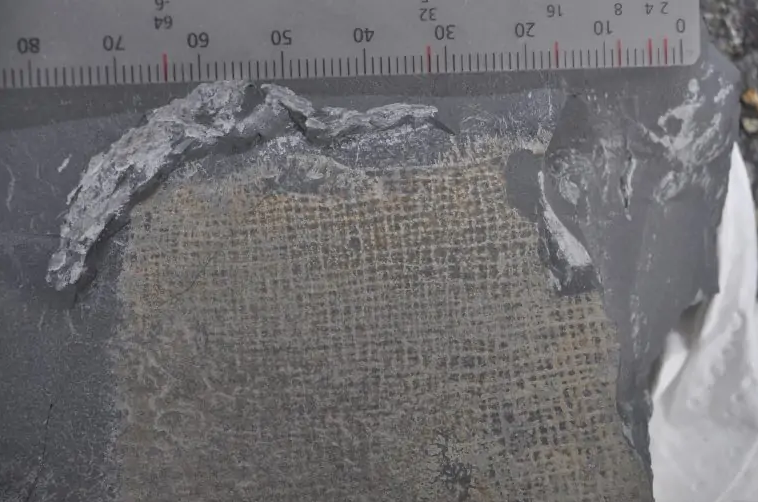Geological Survey Ireland has been supporting the Irish Geoparks since they started 20 years ago. One of the earliest Geoparks on the island is the Burren and Cliffs of Moher UNESCO Global Geopark run by Clare County Council. The geopark geologist is Dr Eamon Doyle and he, along with three other geopark geologists is part-funded by Geological Survey Ireland/DECC.
Eamon, a palaeontologist, has identified numerous new fossil species over the last few years and has published with national and international colleagues in peer-reviewed journals. We are delighted that Geological Survey Ireland is bringing Irish science to an international audience with our support.
The new fossil sponge species, Cyathophycus balori, was discovered by Dr. Eamon Doyle near the Cliffs of Moher in Co Clare, Ireland. The 315-million-year-old fossil is the largest known example of its kind, fossil sponge expert Dr Joseph Botting commented that this can give us valuable insights into the evolution of sponges and their ability to survive in niche environments.
When the ancient sponge was alive, Co Clare was close to the Equator under tropical conditions, with the Atlantic Ocean not yet formed.
The new species, measuring up to 50 cm tall, resembles the modern-day Venus Flower Basket sponge found in the Pacific Ocean with a circular opening at the top of the sponge surrounded by eyelash-like structures. The sponge has been named Cyathophycus balori after the mythological Irish giant Balor, known for his destructive eye.
The discovery has been published in the international geological journal Geobios, with the collaboration of lead author and international fossil sponge expert Dr. Joseph Botting and co-author Dr. Lucy Muir. Both are honorary research fellows at the National Museum Wales (Amgueddfa Cymru) and worked closely with Dr. Doyle throughout the research process.
This find offers important insights into the evolution of sponges and their ability to survive in niche environments where few other species can live. The excellent preservation of the fossil is highly unusual, making it a valuable resource for understanding the story of life on Earth.
Interview available here at 15 minutes 17 seconds.
 The 315-million-year-old fossil Cyathophycus balori
The 315-million-year-old fossil Cyathophycus balori